Groundbreaking inventions in cinema history
Due to the pace of development, we can forget just how eventful the industry has been since its inception. Just think, in its first 100 years, engineers and filmmakers managed to create the practices and techniques we still use today. We've highlighted some of these discoveries in our new blog.


Hi!
We at Filmustage love retrospectives and consider them an essential experience for all filmmakers and enthusiasts who study film in some way. That is why our new blog is dedicated to some of the most significant discoveries in cinema history, which transformed filmmaking and gave us many masters of the craft and masterpiece pictures.
One way or another, this topic can't avoid visual effects, but we won't dwell long on this section, although it is of immense importance. It's all about the fact that our blog has long published a piece on the evolution of visual effects in filmmaking. We encourage you to read it - The evolution of special effects in cinema.
The beginnings of sound cinema: the Vitaphone
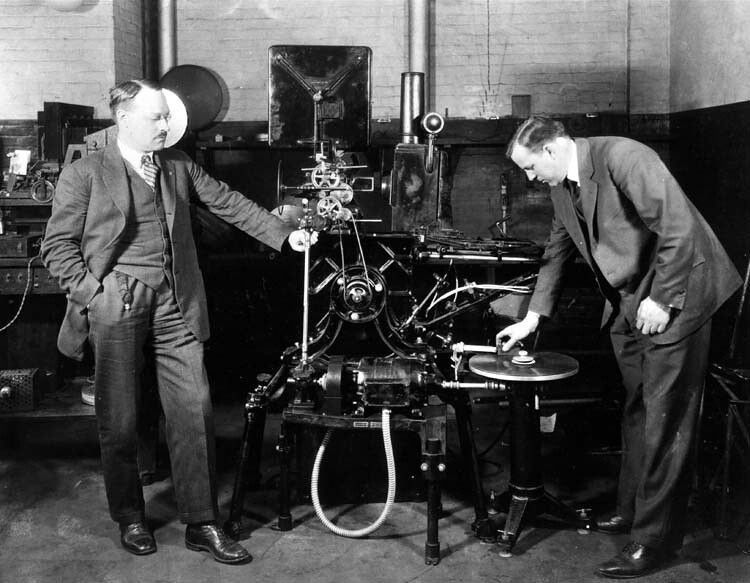
The emergence and popularisation of sound cinema were accompanied by controversy, as by the 1920s, silent cinema had managed to form an entire industry, both for entertainment and art. In addition, silent cinema gave the world such stars as Harold Lloyd, Buster Keaton; Charlie Chay; Charlie Chaplin. Incidentally, Chaplin and many other stars of the time protested against the advent of sound in movies, believing that it would end their technique and distract the audience's attention from acting. But it was only a matter of time.
In 1925 Warner Bros., a small Hollywood studio looking to expand, they bought the rights to a recording technology called Vitaphone from Western Electric. The studio realized it could be a way to make a quick short-term profit. But they had no expectation that the new technology would not only establish them as a major film producer in Hollywood but would change the industry forever.
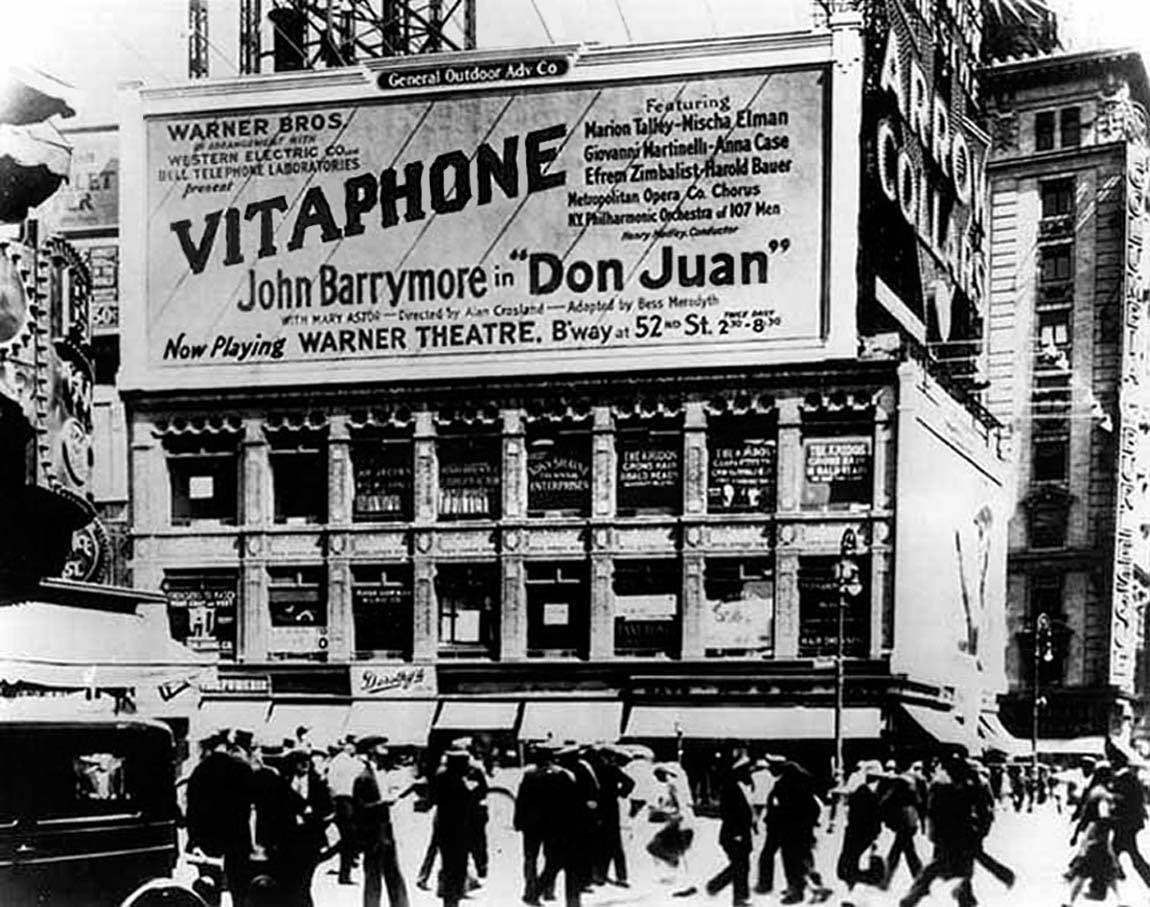
Combining sound with motion pictures was nothing new. Many early cinemas featured orchestra pits to accompany films. When Warner Bros. acquired the Vitaphone technology, producers planned to use it to provide pre-recorded orchestral accompaniment to films, thereby increasing their competitiveness over smaller theatres that did not have their own orchestra pits. In 1926 Warner Bros. debuted with the feature "Don Juan," accompanied by the New York Philharmonic. The success was resounding. By 1927 the company had opened more than 150 cinemas in the US and released its second sound film ("The Jazz Singer," 1927), which is still considered the first sound feature film.
The Vitaphone used separate recording and playback for sound as well as pictures. This technical innovation did not allow for a combined phonogram, as here, the sound of the film was recorded separately, on a gramophone record, which was synchronized with the film projector utilizing a unique mechanism.
Color film
Literally, from the earliest steps in the development of cinema, directors and inventors have tried to color films. Jacques Méliès' famous film "Journey to the Moon" was already in color in its own right.
However, the technology was so imperfect that calling it a work of color filmmaking was hard. The film was then dyed by hand, using paint and a stencil. More recently, Turner's technology has also been discovered: he introduced color film to the world in 1902. This director worked with his method - Turner's shot frames through 3 colored filters - red, green, and blue.
The first steps - Kinemacolor
In 1909 a new technology came along - Kinemacolor, invented by the Englishman George Albert Smith. Color filters were also used here, although the palette was minimal. For example, some scenes were painted in specific colors - the morning was always shown in toxic pink, and the night was in blue. The first film made using this technique was called "A Visit to the Seaside" (1909). However, viewers were not too keen on the limited color scheme approach. Many even thought that it spoiled the quality of the films. The filmmakers were also disappointed because it took a lot of effort and money to paint the pictures, and the proper aesthetic effect did not turn out.
Technicolor was the dawn of color cinema
The invention of Herbert Calmus and Daniel Comstock called Technicolor changed the situation. Better color reproduction was made possible with the design of the new camera that used a complicated combination of colored lenses.
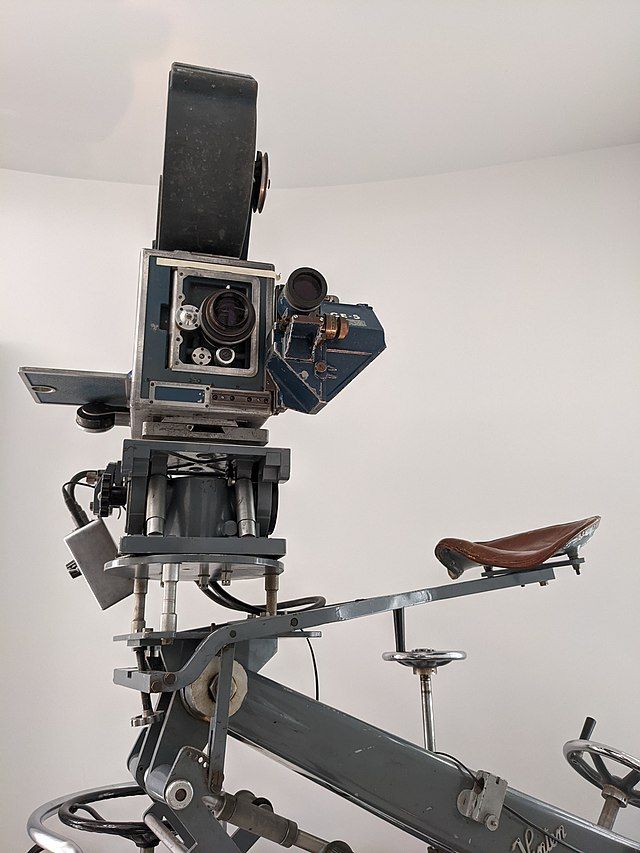
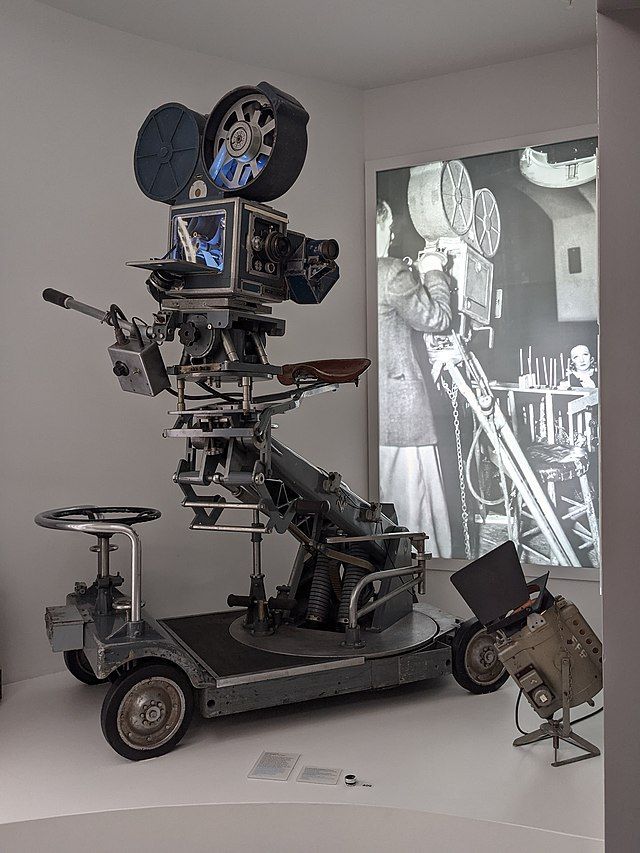
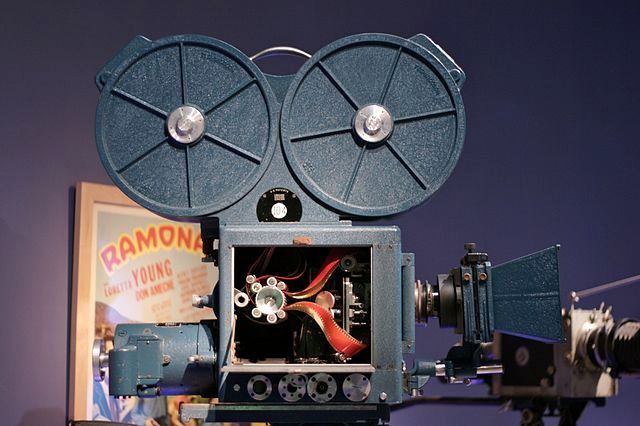
The first color short film made using this system was called "La Cucaracha", released in 1934. After that, a full-length color film called "Becky Sharp" was directed by Ruben Mamoulian. Mamulyan's film was released in 1935, so this date is considered the birth year of color cinema.
Another legendary film colored with the Technicolor system is known today - the romantic melodrama "Gone with the Wind" (1939). Despite the controversial legacy, it created a sensation worldwide and was followed by many other films by directors from different countries.
Technicolor was an expensive and complicated technology that required reworked film cameras. But this system laid the foundation for the further development of color cinema.
8mm film
Viewing movies at home was impossible before the invention of 8mm film. The first examples of 8mm film were made from 16mm film, which was expanded with another row of perforations. Cinematographers used this type of film by exposing one half of the frame, flipping the movie over, and exposing the other half. This technique divided the frame into two 8 mm strips that could be spliced together.
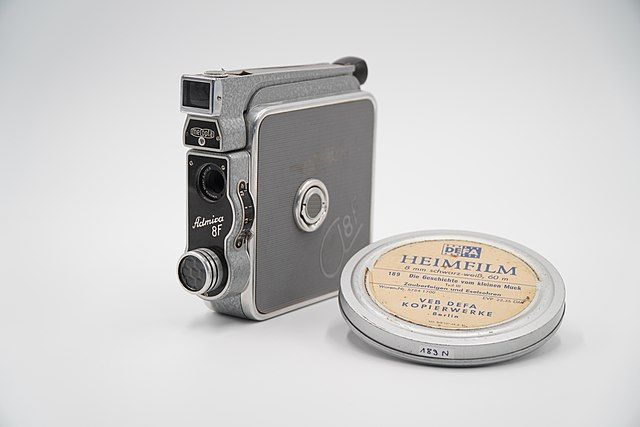
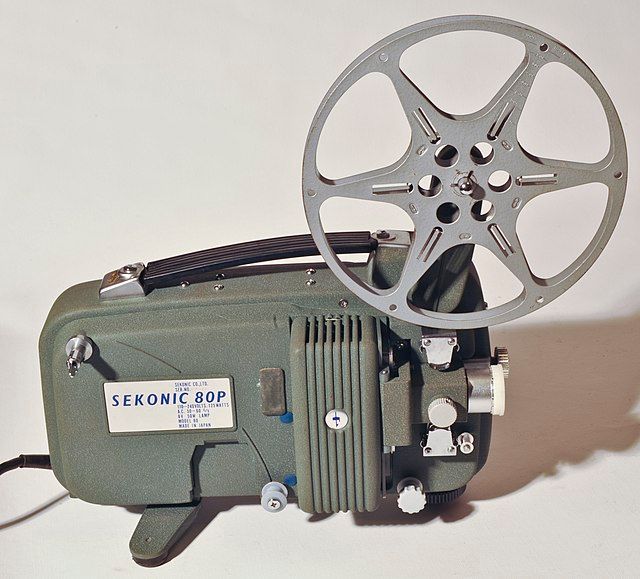
Compared to classic 35mm film, 8mm film was more compact and cheaper to produce and sell. However, it did have one major drawback: when 8mm film was projected on a large screen, the image quality was far worse than that of 35mm film.
This factor did not play a significant role for amateur filmmakers who projected 8mm film in their homes, often used a white sheet or plain wall - 8mm film was ideal for such screens. In the post-war era, in the 1950s and 60s, a boom in amateur filmmaking developed.
What is remarkable for us is that the small film format changed cinema precisely in terms of the emergence of new filmmakers who had such a profound impact on cinema. Among the iconic figures who began their journey with amateur cameras are Martin Scorsese, Woody Allen, Francis Ford Coppola, Roman Polanski, John Cassavetes, and many others. In addition, you'll also find references to the 8mm film camera in the biographies of today's authors, so the significance of this discovery cannot be overstated.
IMAX
So what is IMAX? It's a technology that grew out of a desire to bring the world of cinema closer to the viewer, literally to the touch of anyone sitting in a chair. Legend has it that the first viewers of "Arrival of a Train" rushed from the auditorium. Still, even if true, the effect did not last, so from the beginning of the twentieth-century engineers have been working to keep the viewer amazed. The most obvious way forward was increasing the size of the film frame (recall that the standard for the film is 8, 16, and 35 millimeters wide), but the 70-millimeter format proved unsustainable and quickly fell out of use. Subsequently, many companies and engineering groups proposed various ways of increasing the visual area of the picture with minimal loss to the viewer, right up to giant panoramic screens, onto which the picture was fed by three synchronized projectors (the so-called Cinerama). However, all this came with additional requirements - cumbersome equipment, complicated set-up, a special cinema hall - but it has yet to become a mass product.
The breakthrough happened in 1968, with Canadian filmmaker and inventor Roman Kroitor.
as its primary driver. Born in 1926, Croitor made his first film back in the late forties, followed by a series of explorations of creativity, but also a search for peculiar techniques for his successor directors to express their thoughts as precisely and understandably as possible to the viewer. By the mid-60s, Croitor had become one of the most brilliant documentarians, laying the foundations of the so-called concert documentaries genre about the work and life of musicians. Being a very creative person himself, in 1967, at an international exhibition in Montreal Roman Croitor astonished the audience with his Labyrinth installation, a series of rooms in which walls were literally changed before the eyes of the visitors. The next step was the establishment, in association with other Canadian filmmakers and inventors, of Multiscreen Corporation. In this place, one could engage in active research on how to make the viewer not a moviegoer but part of what was happening on the screen. That's where IMAX got its start.
The first demonstration of the new technology's capabilities took place in 1970 at the Osaka International Exhibition. The way Croitor and his team tried to expand the frame was both simple and elegant. IMAX didn't just use 70 mm film, but arranged the frames vertically instead of horizontally, so that 70 mm was the height of the frame, not the width. Especially for a new format engineer William Shaw developed a projector, which, however, to be widely used, required significant revision, because it was ten times larger than a conventional 35mm cinema projector. It was only a matter of technology, however, as the first 17-minute film made using IMAX technology impressed both the audience and its creators. The new technology also required new facilities - the first dedicated IMAX theatre opened in Toronto in 1971.
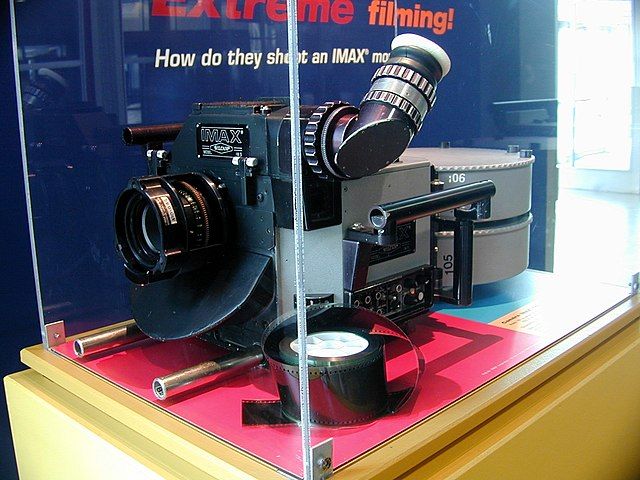

It wasn't without problems. For quite a long time IMAX technology was the destiny of specialized places - in planetariums, libraries, and research centers. The thing is that with increasing the size of the film frame increased and the amount of film you need to record, the technology of the last century didn't allow to produce IMAX stories lasting more than 40 minutes, so the format became the destiny of documentary filmmakers and science popularizers, but through the efforts of these enthusiasts IMAX-cameras have dived to the bottom of the ocean, climbed Mount Everest and traveled into space. One of the first attempts to move beyond science-fiction to mainstream audiences was the use of IMAX technology in the Rolling Stones' 1991 concert film "At the Max", big musicians on a giant screen - something that could not fail to impress audiences. The first live-action drama film to be shot in IMAX was Jean-Jacques Annaud's 40-minute short "Wings of Courage" in 1995.
Over time, two important technical improvements came about: on the one hand, projector technology from the early 2000s allowed IMAX films to be up to two hours long, and in 2003, IMAX DMR technology - the digital remastering of ordinary pictures shot with traditional techniques into the new format - was introduced. The first picture to get a second life on the giant IMAX screen was Ron Howard's "Apollo 13" (1995). Warner Bros. was most active in transforming films into IMAX format. The sequels to "The Matrix", the "Harry Potter and the Prisoner of Azkaban" and "The Polar Express" all cemented the IMAX theatres as the places where new movies were created. What's more, "The Polar Express" holds the distinction of being the most coveted IMAX movie to this day, with its screening bringing in a quarter of all box office receipts (you can also check out our recent blog concerning the director of "Polar Express" - Diving into the past with Robert Zemeckis).
Afterwards
Of course, we have chosen to highlight only the most interesting cinematic innovations for us. However, that does not mean that these are the most important ones. This list may contain dozens more discoveries, so if you are interested in this format of blogs, let us know and the continuation of the selection will not be long. Take care and see ya soon on the pages of Filmustage!